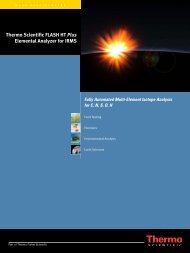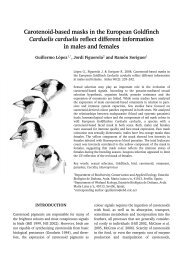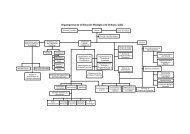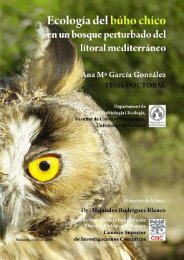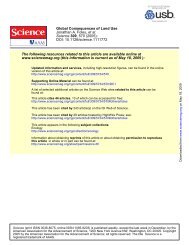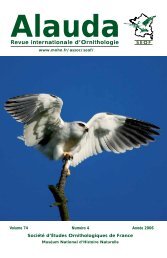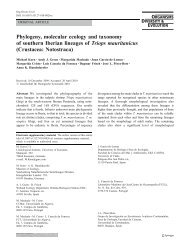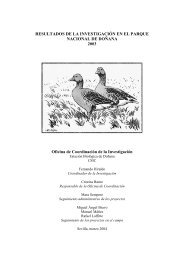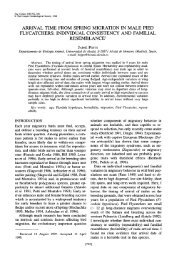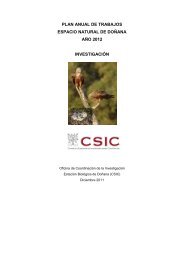Voucher Specimen Collection Preparation Identification and Storage ...
Voucher Specimen Collection Preparation Identification and Storage ...
Voucher Specimen Collection Preparation Identification and Storage ...
You also want an ePaper? Increase the reach of your titles
YUMPU automatically turns print PDFs into web optimized ePapers that Google loves.
<strong>and</strong> Peromyscus tissue separate from other specimens so that only they need to be treated<br />
with extra caution.<br />
• Keep specimens cold (ice packs in an insulated bag works well) <strong>and</strong> freeze as soon as<br />
possible. Dry ice in an insulated chest will last up to eight days in the field <strong>and</strong> can be<br />
used to refreeze the ice packs as well.<br />
4.3.3 Whole <strong>Specimen</strong>s<br />
• Currently the Royal BC Museum is the only facility in the province with the necessary<br />
biohazard equipment <strong>and</strong> staff trained to prepare whole small mammals as museum<br />
specimens for identification. Because of the health risks <strong>and</strong> because of the need to meet<br />
museum st<strong>and</strong>ards for prepared specimens it is recommended that this work be done by<br />
the Royal BC Museum. It would be necessary to arrange to get this work done at the<br />
Royal BC Museum before field work is started.<br />
• The Royal BC Museum is also willing to hold specimens in an unprepared state for as<br />
long as a researcher needs (for a storage fee) if that is all that is required by the<br />
researcher. At the end of the storage period the Royal BC Museum is then free to use the<br />
specimens in whatever manner they see fit including disposing of them.<br />
Collecting<br />
Care should be taken in h<strong>and</strong>ling fresh small mammals <strong>and</strong> their traps because of disease<br />
hazards. Rabies risks are covered by the m<strong>and</strong>atory RIC Bat Inventory training course. It is<br />
strongly recommended that the RIC Small Mammal Inventory training course be taken as<br />
well to cover methods of dealing with the risk from Hanta virus (in Peromyscus) <strong>and</strong> plague.<br />
Killing<br />
• To kill small mammals humanely place them in a sealed container with a cotton ball<br />
soaked with Isoflurane (available from veterinary suppliers) for about 10 minutes.<br />
Storing specimens in the field<br />
• Seal specimens individually in a ziplock type plastic bag with a field label as described<br />
in section 2.4.2 with the date, location, collector <strong>and</strong> field reference number. Keep bats<br />
<strong>and</strong> Peromyscus separate from other specimens so that only they need to be treated with<br />
extra caution.<br />
• Keep specimens cold (ice packs in an insulated bag works well) <strong>and</strong> freeze as soon as<br />
possible. Dry ice in an insulated chest will last up to eight days in the field <strong>and</strong> can be<br />
used to refreeze the ice packs as well.<br />
• Fluid preservation of small mammals is not recommended because it is not possible to<br />
see coat colours <strong>and</strong> because it roughly doubles the preparation time <strong>and</strong> cost. In an<br />
emergency, where freezing is not possible, specimens can be fixed in 10% formalin or in<br />
95% ethanol.<br />
• Tissues may need to be taken in the field for mDNA Analysis. Check with the lab where<br />
this work is to be done for preservation method.<br />
<strong>Preparation</strong><br />
• In the case of mammals it is best to prepare the specimens as soon after collection as<br />
possible to avoid freezer burn, etc. However, if the researcher has no need to have the<br />
specimens prepared then they can be left unprepared.<br />
June 9, 1999 21



